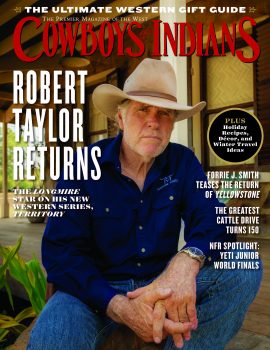Rick Schroder reflects on the Lonesome Dove role that launched his adult acting career.As anyone who’s ever read Lonesome Dove or watched the miniseries adaptation can tell you, there’s more to the saga than the friendship between the taciturn Woodrow F. Call and the gregarious Augustus “Gus” McCrae. Chief among the assorted subplots: a coming-of-age story that charts the evolution of Newt Dobbs — the son Call comes to admire but never quite manages to acknowledge — from callow youth to reliable adult.
Newt, is, after all, the “lonesome dove” that gives the book its title.
Rick Schroder was just short of 18 when Lonesome Dove went into production as an epic television drama. At the time, he was best known for his roles as sensitive preteens in movies — most notably, in The Champ (1979) opposite Jon Voight and The Earthling (1980) opposite William Holden — and as a precocious adolescent in the TV sitcom Silver Spoons (1982 – 87). Much like Newt, Schroder was itching for an opportunity to prove himself worthy of grown-up responsibilities. So when he was offered the opportunity to portray the young orphan cowboy, Schroder recognized the part as the golden opportunity it was.
Though he needed a bit of convincing at first —Schroder had, as he recalls, “a pretty severe childhood allergy” to horses — he ultimately saddled up and galloped off to the next phase of his career. “People ask me how I was able to make the transition so well to adult roles,” Schroder says. “And I tell them it was because of jobs like Lonesome Dove. Because a producer gave me the opportunity to [graduate] from Silver Spoons, a piece of pop culture, which I did from when I was 12 to 17. After you do something like that, you can fade away like any other piece of pop culture. But just a year later, I was given the chance to go from Silver Spoons to Lonesome Dove. And that made all the difference in my career, and in the way people perceive me, and in the opportunities that came after that.”
Despite his relative youth, Schroder arrived on the Lonesome Dove set a seasoned professional. He already had a Golden Globe Award to his name, which he received at age 9 for his big-screen debut in The Champ, and three Young Artist Awards for his work in Silver Spoons and The Earthling. Just as important, in his estimation, he came equipped with a serious work ethic.
“I was trained in the old school ways by a great actor named William Holden,” Schroder says. “He trained me to hang up your wardrobe at the end of the day’s work — to not just drop your clothes and your socks and everything on the floor for somebody else to pick up. And Jon Voight — he trained me to show up prepared every day. These were men who taught me by example.”
The leads of Lonesome Dove would also make a lasting impression. “I think about Bobby Duvall and smile,” Schroder says. “I think about him throwing parties on Friday nights at a little local hole-in-the-wall Mexican joint with live music and being the life of the party. And I think about coming back into the base camp with a javelina that I’d shot with my bow and arrow out in the desert and not quite knowing what to do with it. And I remember the teamsters on the set digging a hole and putting hot coals on it, and then burying the pig in it and then digging it up the next day and feasting on it.”
Throughout the quarter-century since Lonesome Dove premiered on CBS, Schroder has demonstrated his versatility in a variety of film and TV roles, as well as on the other side of the camera as writer and director of Black Cloud, a 2004 drama starring Eddie Spears as a Navajo boxer; and Our Wild Hearts, a 2013 Hallmark Movie Channel production that he co-wrote with his wife, Andrea, as the first starring vehicle for budding actress Cambrie Schroder, one of their four children.
As proud as he might be of these and other credits, though, Schroder, now 43, admits that nothing compares with being part of the legend that is Lonesome Dove. “We all knew it was a great script. We all knew there were great actors in it. But nobody knew the magic that would come from it. And 25 years later, it still holds up. It’s still magic. It’s a piece of history that will live on long, long, long from now.”
From the February/March 2014 issue.












